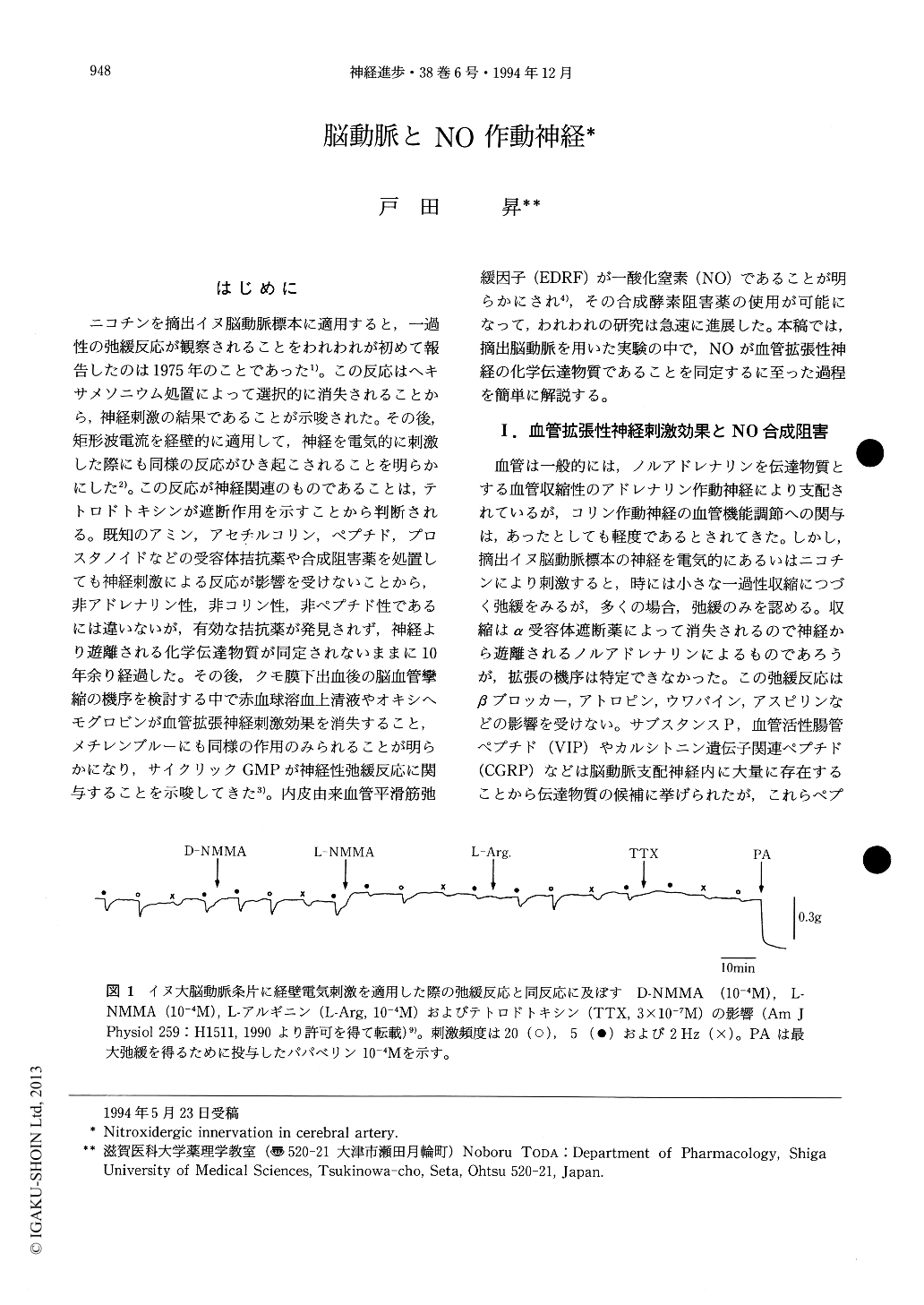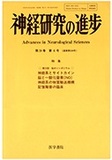Japanese
English
- 有料閲覧
- Abstract 文献概要
- 1ページ目 Look Inside
はじめに
ニコチンを摘出イヌ脳動脈標本に適用すると,一過性の弛緩反応が観察されることをわれわれが初めて報告したのは1975年のことであった1)。この反応はヘキサメソニウム処置によって選択的に消失されることから,神経刺激の結果であることが示唆された。その後,矩形波電流を経壁的に適用して,神経を電気的に刺激した際にも同様の反応がひき起こされることを明らかにした2)。この反応が神経関連のものであることは,テトロドトキシンが遮断作用を示すことから判断される。既知のアミン,アセテルコリン,ペプチド,プロスタノイドなどの受容体拮抗薬や合成阻害薬を処置しても神経刺激による反応が影響を受けないことから,非アドレナリン性,非コリン性,非ペプチド性であるには違いないが,有効な拮抗薬が発見されず,神経より遊離される化学伝達物質が同定されないままに10年余り経過した。
Transmural electrical stimulation or nicotine produced a relaxation in canine cerebral arterial strips which was not influenced by beta-adrenoceptor antagonists, atropine, aspirin and ouabain nor by treatment with high concentrations with VIP, CGRP and ANP. The response was abolished by oxy-hemoglobin and methylene blue. Nitric oxide (NO) synthase inhibitors abolished the relaxant response, and the inhibitory effect was reversed by L-, but not D-, arginine. Relaxations induced by NO were not affected by NO synthase inhibitors but were abolished by oxyhemoglobin and methylene blue.

Copyright © 1994, Igaku-Shoin Ltd. All rights reserved.


